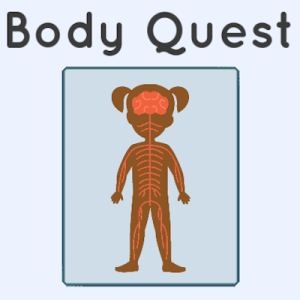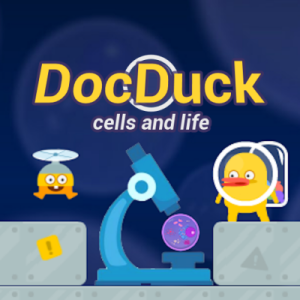Vocabulary
, multicellular organisms, cells, hierarchical structure, tissue, organ system, Integumentary and Epithelial Systems, epithelial tissue, homeostasis, Digestive and Excretory Systems, Endocrine System, glands, hormones, adrenal glands, pituitary glands, Nervous System, voluntary movement, involuntary movement, neurons, stimuli, sense organs, Circulatory and Respiratory Systems, arteries, veins, capillaries, Muscular System, Skeletal System, tendons, muscular system, cardiovascular system, circulatory system, nervous system, skeletal muscles, smooth muscles, cardiac muscles, reproductive system, excretory system, digestive system, metabolic waste, neurons, respiratory system, Robert Hooke, Schleiden, Schwann, Virchow, unicellular, multicellular, animal cell, plant cell, fungi, prokaryote, eukaryote, archaea, bacteria, virus, vegetal, cell membrane, cell wall, vacuole, nucleus, RNA, DNA, ribosomes, chromosomes, centrioles, The Cell Theory, cell division, chloroplast, photosynthesis, cytoplasm, cytosol, organelles, flagella, Golgi Apparatus, homeostasis, mitochondria, microscope, protists, tissues, organs, systems, rough endoplasmic reticulum, smooth endoplasmic reticulum, vesicle, cells, living, non-living, prokaryotic, eukaryotic, multi-cellular organism, unicellular organism, single-celled, archaea, bacteria, reproduction, protist, cell theory, respiration, digestion, tissue, organ, multicellular organisms, cells, hierarchical structure, tissue, organ system, Integumentary and Epithelial Systems, epithelial tissue, homeostasis, Digestive and Excretory Systems, Endocrine System, glands, hormones, adrenal glands, pituitary glands, Nervous System, voluntary movement, involuntary movement, neurons, stimuli, sense organs, Circulatory and Respiratory Systems, arteries, veins, capillaries, Muscular System, Skeletal System, tendons, muscular system, cardiovascular system, circulatory system, nervous system, skeletal muscles, smooth muscles, cardiac muscles, reproductive system, excretory system, digestive system, metabolic waste, neurons, respiratory system, Robert Hooke, Schleiden, Schwann, Virchow, unicellular, multicellular, animal cell, plant cell, fungi, prokaryote, eukaryote, archaea, bacteria, virus, vegetal, cell membrane, cell wall, vacuole, nucleus, RNA, DNA, ribosomes, chromosomes, centrioles, The Cell Theory, cell division, chloroplast, photosynthesis, cytoplasm, cytosol, organelles, flagella, Golgi Apparatus, homeostasis, mitochondria, microscope, protists, tissues, organs, systems, rough endoplasmic reticulum, smooth endoplasmic reticulum, vesicle, cells, living, non-living, prokaryotic, eukaryotic, multi-cellular organism, unicellular organism, single-celled, archaea, bacteria, reproduction, protist, cell theory, respiration, digestion, tissue, organ, muscular system, cardiovascular system, circulatory system, nervous system, skeletal muscles, smooth muscles, cardiac muscles, reproductive system, excretory system, digestive system, metabolic waste, neurons, respiratory system, Robert Hooke, Schleiden, Schwann, Virchow, unicellular, multicellular, animal cell, plant cell, fungi, prokaryote, eukaryote, archaea, bacteria, virus, vegetal, cell membrane, cell wall, vacuole, nucleus, RNA, DNA, ribosomes, chromosomes, centrioles, The Cell Theory, cell division, chloroplast, photosynthesis, cytoplasm, cytosol, organelles, flagella, Golgi Apparatus, homeostasis, mitochondria, microscope, protists, tissues, organs, systems, rough endoplasmic reticulum, smooth endoplasmic reticulum, vesicle, cells, living, non-living, prokaryotic, eukaryotic, multi-cellular organism, unicellular organism, single-celled, archaea, bacteria, reproduction, protist, cell theory, respiration, digestion, tissue, organ, Robert Hooke, Schleiden, Schwann, Virchow, unicellular, multicellular, animal cell, plant cell, fungi, prokaryote, eukaryote, archaea, bacteria, virus, vegetal, cell membrane, cell wall, vacuole, nucleus, RNA, DNA, ribosomes, chromosomes, centrioles, The Cell Theory, cell division, chloroplast, photosynthesis, cytoplasm, cytosol, organelles, flagella, Golgi Apparatus, homeostasis, mitochondria, microscope, protists, tissues, organs, systems, rough endoplasmic reticulum, smooth endoplasmic reticulum, vesicle, cells, living, non-living, prokaryotic, eukaryotic, multi-cellular organism, unicellular organism, single-celled, archaea, bacteria, reproduction, protist, cell theory, respiration, digestion, tissue, organ, cells, living, non-living, prokaryotic, eukaryotic, multi-cellular organism, unicellular organism, single-celled, archaea, bacteria, reproduction, protist, cell theory, respiration, digestion, tissue, organ, cells, living, non-living, prokaryotic, eukaryotic, multi-cellular organism, unicellular organism, single-celled, archaea, bacteria, reproduction, protist, cell theory, respiration, digestion, tissue, organ, multicellular, cells, tissues, stomach, digest, living tissue, bone, brain, organ, neurons, heart, muscle, nervous system, digestive system, excretory system, respiratory system, articular system, locomotor system, subsystem, cells, living, non-living, prokaryotic, eukaryotic, multi-cellular organism, unicellular organism, single-celled, archaea, bacteria, reproduction, protist, cell theory, respiration, digestion, tissue, organ, Robert Hooke, Schleiden, Schwann, Virchow, unicellular, multicellular, animal cell, plant cell, fungi, prokaryote, eukaryote, archaea, bacteria, virus, vegetal, cell membrane, cell wall, vacuole, nucleus, RNA, DNA, ribosomes, chromosomes, centrioles, The Cell Theory, cell division, chloroplast, photosynthesis, cytoplasm, cytosol, organelles, flagella, Golgi Apparatus, homeostasis, mitochondria, microscope, protists, tissues, organs, systems, rough endoplasmic reticulum, smooth endoplasmic reticulum, vesicle, multicellular, cells, tissues, stomach, digest, living tissue, bone, brain, organ, neurons, heart, muscle, nervous system, digestive system, excretory system, respiratory system, articular system, locomotor system, subsystem, cells, living, non-living, prokaryotic, eukaryotic, multi-cellular organism, unicellular organism, single-celled, archaea, bacteria, reproduction, protist, cell theory, respiration, digestion, tissue, organ, multicellular, cells, tissues, stomach, digest, living tissue, bone, brain, organ, neurons, heart, muscle, nervous system, digestive system, excretory system, respiratory system, articular system, locomotor system, subsystem, cells, living, non-living, prokaryotic, eukaryotic, multi-cellular organism, unicellular organism, single-celled, archaea, bacteria, reproduction, protist, cell theory, respiration, digestion, tissue, organ, cells, living, non-living, prokaryotic, eukaryotic, multi-cellular organism, unicellular organism, single-celled, archaea, bacteria, reproduction, protist, cell theory, respiration, digestion, tissue, organ




